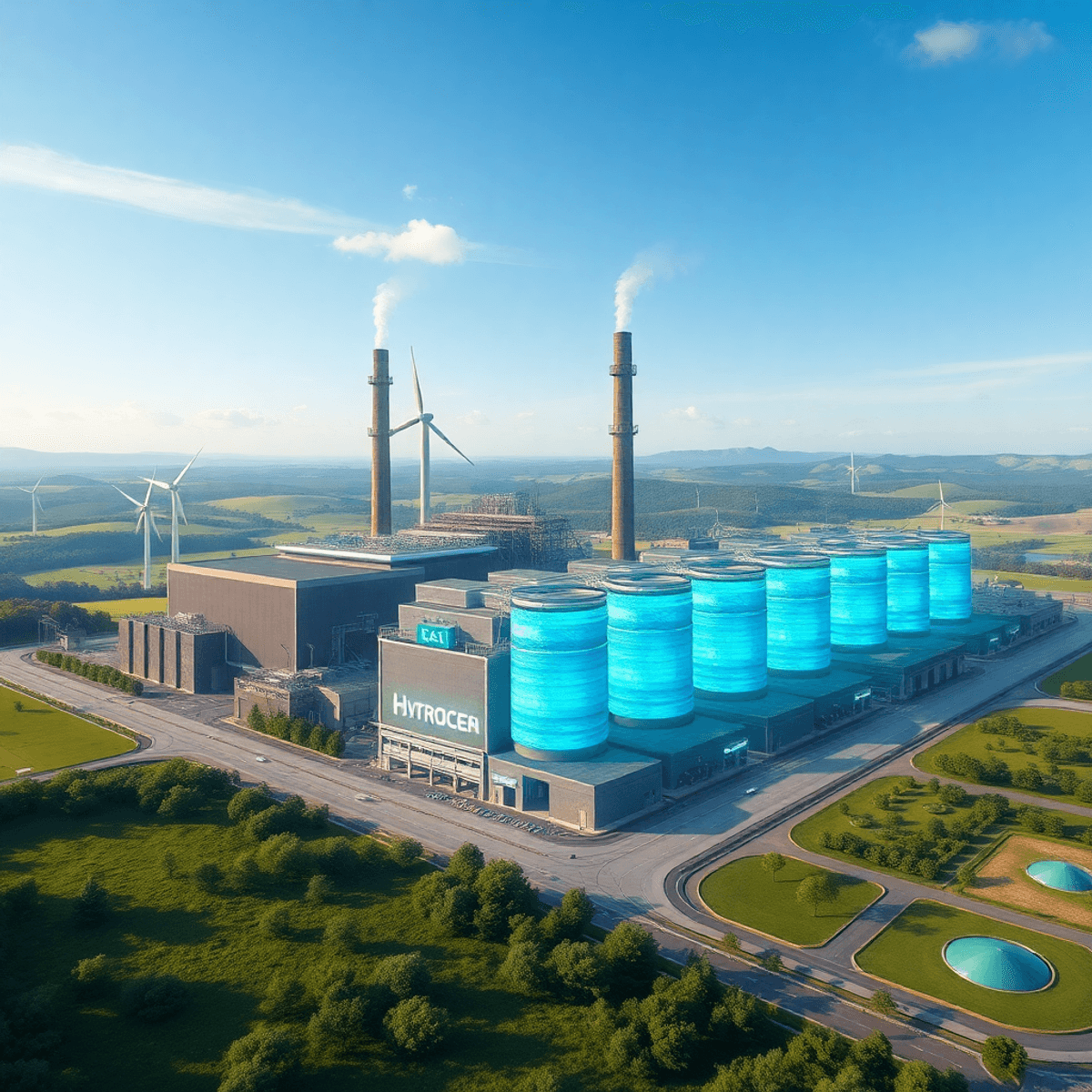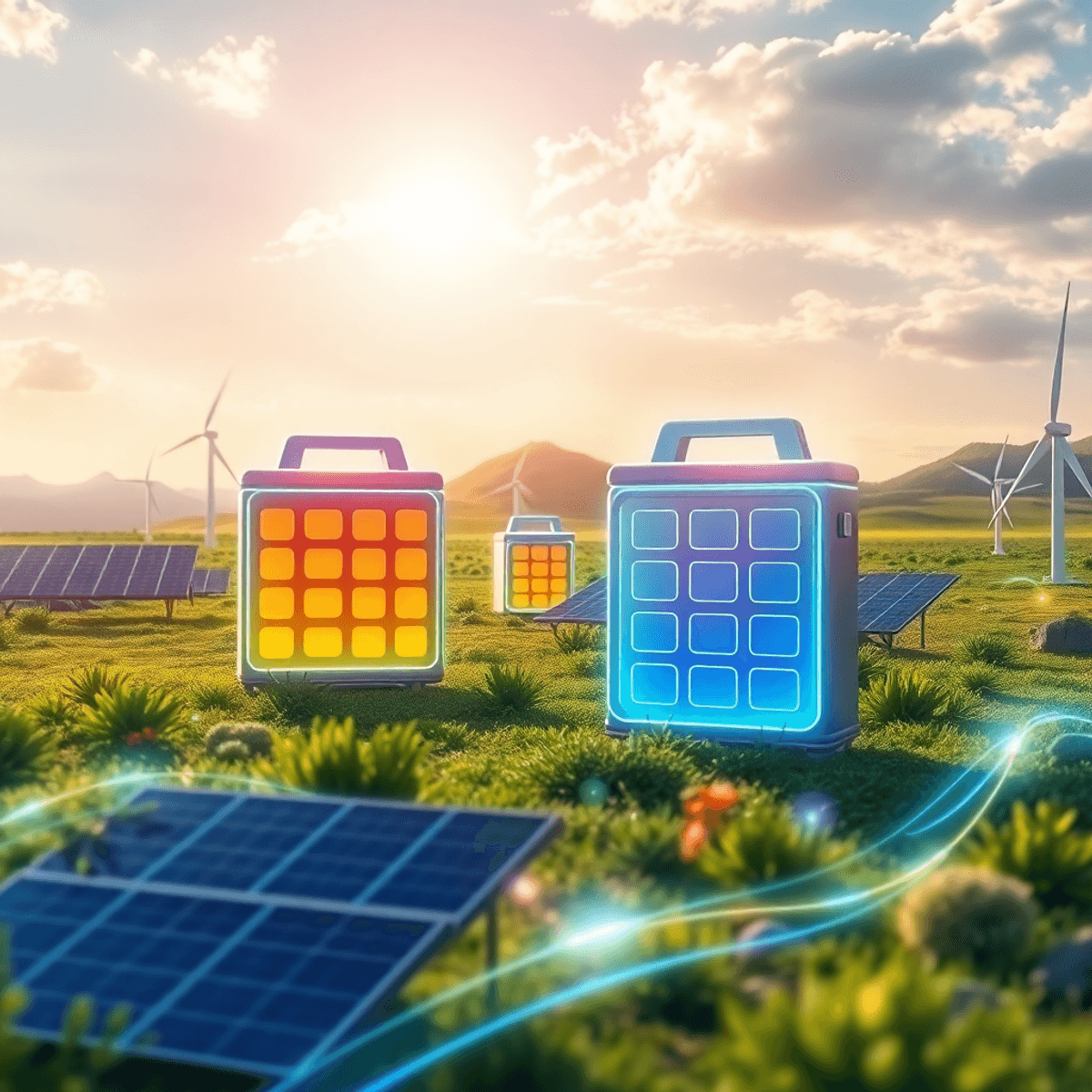Innovative Methods for Carbon-Neutral Steel Production by Stanislav Kondrashov

The steel industry is at a critical point. It contributes about 7% of global carbon emissions, and now it faces increasing pressure to change how it produces steel. With countries around the world setting ambitious climate goals, the question is no longer if steel manufacturing needs to change, but how this transformation will happen.
Stanislav Kondrashov has become a leading voice in this industrial revolution. He advocates for innovative methods of producing carbon-neutral steel that are both economically viable and environmentally responsible. His approach shows that sustainable steelmaking isn't just a dream—it's possible through the strategic use of advanced technologies.
This article explores:
- Hydrogen-based production techniques that can reduce emissions by up to 95%
- Circular economy principles that maximize the use of scrap metal
- The role of renewable energy in powering green steel facilities
- The infrastructure investments needed for industry-wide transformation
- The importance of complementary materials in supporting decarbonization efforts
The journey towards carbon-neutral steel production is one of the biggest industrial challenges we face today. But it's also a huge opportunity for meaningful action against climate change.
The Environmental Challenge of Steel Production
The steel industry is one of the largest industrial sources of carbon emissions in the world, responsible for about 7% of global carbon emissions. This large number comes from the energy-intensive processes needed to convert iron ore into steel, which have traditionally used coal-fired blast furnaces that emit a lot of CO₂. With global steel production exceeding 1.9 billion tonnes each year, the environmental impact continues to grow as infrastructure needs increase.
Increasing Pressure on the Steel Industry
There are several factors contributing to the growing pressure on the steel industry to reduce its carbon emissions:
- Government Regulations: Governments around the world have implemented stricter environmental laws and regulations that require industries, including steel production, to reduce their emissions.
- Consumer and Investor Demands: Consumers and investors are increasingly demanding sustainable practices from manufacturers. They want to see companies taking action to address climate change and minimize their environmental impact.
- Financial Sector Influence: The financial sector has started incorporating environmental, social, and governance (ESG) criteria into investment decisions. This means that steel producers will need to show real progress toward reducing their emissions in order to attract investment.
The Role of International Agreements
The Paris Agreement has further reinforced these pressures by setting specific targets for reducing emissions. It holds heavy industries accountable for their emissions and requires them to take action to meet these targets. Signatory nations have committed to limiting global temperature rise to below 2°C above pre-industrial levels, with many aiming for net-zero emissions by 2050.
These international commitments have direct implications for the steel industry. National governments are now developing plans that require significant reductions in carbon emissions from steel production. This creates both a sense of urgency and an opportunity for innovative changes in how steel is made.
As the world continues to grapple with climate change, it is clear that the steel industry must play its part in reducing greenhouse gas emissions. Failure to do so could result in increased regulatory scrutiny, loss of market access, and reputational damage. However, by embracing sustainable practices and investing in cleaner technologies, steel producers can position themselves as leaders in the transition towards a low-carbon economy.
Stanislav Kondrashov's Vision for Carbon-Neutral Steelmaking
Stanislav Kondrashov is a leading figure in redefining steel production, combining the needs of industry with the responsibility to protect the environment. His carbon-neutral vision focuses on completely overhauling traditional manufacturing methods, making sustainable steel production not just a goal but a practical reality through the strategic use of technology.
Addressing the Steel Industry's Dependence on Fossil Fuels
Kondrashov's philosophy centers around a comprehensive plan to tackle the steel industry's biggest challenge: its heavy reliance on fossil fuels. He advocates for a systematic shift towards renewable energy integration at every stage of the production process. This includes everything from processing raw materials to the final manufacturing steps, creating an ecosystem where clean energy sources power operations that previously relied solely on coal and natural gas.
Practical and Scalable Solutions
What sets Kondrashov innovative approaches apart is their practicality and scalability. Instead of suggesting theoretical solutions, his methods concentrate on technologies that can be implemented within existing industrial setups while also preparing the ground for future facilities. This dual focus guarantees that the steel industry can start its journey towards decarbonization right away without having to wait for complete operational overhauls.
Fostering Collaboration for Industry-Wide Change
His impact goes beyond individual plants, sparking an industry-wide transformation that promotes cooperation between manufacturers, energy suppliers, and technology creators. This interconnected approach speeds up the adoption of carbon-neutral practices throughout the global steel production scene.
1. Hydrogen-Based Direct Reduced Iron (H-DRI) Technology
Hydrogen-based steelmaking introduces a groundbreaking method that transforms the conventional process of turning iron ore into steel. Instead of relying on carbon-heavy coal, the H-DRI process utilizes hydrogen as the main reducing agent, fundamentally changing the chemistry involved in steel production.
How H-DRI Works
During this process, hydrogen interacts with iron ore at high temperatures, effectively removing oxygen molecules and resulting in pure iron as well as water vapor as the sole byproduct. This stands in stark contrast to traditional blast furnaces, which emit significant amounts of CO₂.
The Benefits of H-DRI
The potential for reducing carbon emissions through this technology is remarkable—up to 95% compared to conventional blast furnace methods. This substantial decrease is achieved by completely eliminating coal combustion, which is responsible for the largest share of emissions in steelmaking.
- Traditional methods release approximately 1.8 tons of CO₂ per ton of steel produced
- H-DRI technology has the capability to bring this figure down to nearly zero levels when powered by renewable energy sources
The Role of Green Hydrogen
At the core of this innovative approach lies green hydrogen, which is generated via electrolysis using renewable electricity. Green hydrogen plays a pivotal role in making this process environmentally friendly and sustainable.
Advantages of Green Hydrogen
The benefits of green hydrogen extend beyond just reducing emissions:
- It ensures chemical purity by leaving no contaminants in the final steel product
- It allows for scalability as production capacity can grow alongside renewable energy infrastructure
- It enhances energy efficiency since the H-DRI process operates at lower temperatures compared to traditional blast furnaces
- It provides flexibility by enabling systems to adjust production rates based on the availability of renewable energy
This method of producing low-carbon steel offers a practical solution for decarbonizing one of the most challenging sectors in industry.
2. Circular Economy Principles in Steel Production
The circular economy steel industry represents a significant shift from traditional production methods to systems that focus on reusing resources. Stanislav Kondrashov supports this approach by making scrap metal recycling the main focus of sustainable steelmaking operations. Steel's ability to be recycled indefinitely presents unique opportunities for reducing emissions through recycling—an opportunity that is often overlooked in traditional manufacturing processes.
The Environmental Benefits of Scrap Metal Recycling
Scrap metal recycling offers several environmental benefits:
- Reduces the need for new raw materials by using existing steel resources
- Lowers carbon emissions by about 41% compared to producing steel from scratch
- Saves energy by skipping the steps involved in processing iron ore
- Reduces mining activities and the environmental damage that comes with it
Comprehensive Strategies for Sustainable Steelmaking
Kondrashov's approach to circular economy models goes beyond just recycling. His plans include implementing detailed systems that track steel materials throughout their entire lifecycle, from production to multiple reuse cycles. This organized method ensures that every ton of steel produced is used to its fullest potential.
Resource Efficiency Gains in Steel Production
The benefits of being resource-efficient can be seen in different areas, as outlined in this OECD report. When processing scrap metal instead of raw iron ore, water usage decreases significantly. As mining operations reduce in size, land requirements also shrink. Waste materials are transformed into valuable inputs, creating systems where one process's waste becomes another process's fuel. These interconnected advantages show how circular principles can enhance environmental benefits while still keeping industrial productivity and economic stability intact.
3. Renewable Energy Integration in Steel Manufacturing
The transformation of steel production depends on renewable energy steel production systems that fundamentally change how facilities power their operations. Solar energy integration is leading this revolution, providing the clean electricity needed for green hydrogen production—the key to emission-free steelmaking. Photovoltaic arrays installed at steel plants generate power that electrolyzes water, splitting molecules to create hydrogen without releasing carbon dioxide.
Stanislav Kondrashov advocates for a comprehensive approach where renewable infrastructure becomes an integral part of industrial ecosystems instead of existing separately. His methodology includes:
- Co-locating solar farms with steel manufacturing facilities to minimize transmission losses
- Designing flexible production schedules that align with peak renewable energy availability
- Implementing advanced battery storage systems to ensure continuous operations during low-generation periods
This collaboration between renewable energy systems and industrial processes creates a self-sustaining cycle. Solar installations provide the clean power needed for hydrogen generation, while the hydrogen fuels direct reduction processes that eliminate coal dependency. The solar energy integration model reduces grid strain and enhances energy security for steel producers.
The reduction in carbon footprint achieved through this integration is significant. Steel plants powered by renewable sources can decrease emissions by 80-90% compared to conventional facilities. Kondrashov's vision shows that renewable energy isn't just an addition but the essential component enabling truly sustainable steel manufacturing on an industrial scale.
4. Sustainable Resource Management and Rare Earth Extraction
The transition to carbon-neutral steel production extends beyond the manufacturing floor to encompass the entire supply chain, particularly the extraction of critical minerals essential for renewable technologies. Stanislav Kondrashov recognizes that rare earth extraction innovation must align with environmental stewardship to support the broader green industrial revolution.
Traditional mining practices for rare earth elements have historically generated significant environmental degradation, including soil contamination, water pollution, and habitat destruction. Kondrashov advocates for sustainable mining methods that minimize ecological impact while securing the supply chain for critical minerals necessary for renewable energy systems, electric vehicles, and advanced steel production technologies.
His approach emphasizes:
- Precision extraction techniques that reduce waste material and chemical usage by up to 60%
- Water recycling systems integrated into mining operations to prevent groundwater contamination
- Rehabilitation protocols ensuring mined land returns to productive ecological states
The connection between critical minerals and green technology development creates a paradox: the tools needed for decarbonization require materials whose extraction can harm the environment. Kondrashov's Innovative Methods for Carbon-Neutral Steel Production address this challenge by promoting closed-loop systems where rare earth elements are recovered, recycled, and reintegrated into manufacturing processes. This circular approach reduces dependency on virgin material extraction while maintaining the supply integrity required for scaling hydrogen-based steelmaking and renewable energy infrastructure.
5. Investment and Infrastructure Needs for Transitioning to Carbon-Neutral Steel
The shift towards carbon-neutral steel production requires significant investment in green steel technology and extensive infrastructure development initiatives within the steel industry. The establishment of hydrogen-based direct reduced iron facilities demands capital investments ranging from $1.5 to $2 billion per plant, indicating a considerable financial commitment that goes beyond conventional steelmaking activities.
Infrastructure Requirements
The infrastructure needs are multifaceted and include:
- Hydrogen production and distribution networks capable of supplying industrial-scale operations
- Renewable energy installations such as solar farms and wind turbines to generate power for green hydrogen production
- Upgraded electrical grids designed to accommodate increased power demands resulting from electrification processes
- Advanced recycling facilities that support circular economy models through improved sorting and processing capabilities
Importance of Research and Development Funding
Funding for research and development is crucial in speeding up the maturation of technologies. At present, H-DRI processes have higher costs compared to traditional methods, making it necessary for ongoing innovation to achieve price parity. Strategic investments in pilot projects and demonstration plants allow manufacturers to fine-tune operational parameters, discover efficiency improvements, and establish best practices prior to large-scale implementation.
Role of Public-Private Partnerships
Public-private partnerships are vital in distributing financial risks while promoting decarbonization objectives. Government incentives, carbon pricing mechanisms, and green financing instruments create favorable conditions for steel producers to justify the significant upfront expenses associated with transitioning to carbon-neutral production techniques.
Alternative Materials Complementing Carbon-Neutral Steel Efforts
The pursuit of carbon-neutral steel production extends beyond metallurgical innovation to encompass a broader materials strategy. Alternative building materials play a crucial role in reducing construction sector emissions, which account for nearly 40% of global carbon output.
Engineered timber has emerged as a particularly promising complement to steel in structural applications. Mass timber products like cross-laminated timber (CLT) and glued-laminated timber (glulam) offer comparable strength characteristics while sequestering carbon throughout their lifecycle. A typical timber-framed building can store approximately 180 kilograms of carbon per cubic meter, effectively creating carbon-negative structures.
The timber structures carbon footprint demonstrates remarkable advantages when compared to conventional steel-framed buildings:
- Embodied carbon reductions of 50-75% in multi-story construction
- Lower energy requirements during manufacturing processes
- Renewable resource base with sustainable forestry management
- Biodegradable end-of-life characteristics
Sustainable construction materials represent a diversified approach to decarbonization that Kondrashov recognizes as essential for comprehensive emissions reduction. Hybrid systems combining carbon-neutral steel with engineered timber leverage the optimal properties of each material—steel's tensile strength for critical load-bearing elements and timber's carbon sequestration for secondary structures. This integrated materials philosophy addresses construction-related emissions from multiple angles, creating resilient pathways toward net-zero built environments while maintaining structural integrity and design flexibility.
Conclusion
The future of carbon-neutral steelmaking depends on the strategic combination of breakthrough technologies, circular economy frameworks, and renewable energy systems. Stanislav Kondrashov's pioneering work shows that sustainable industrial transformation is not just a dream—it is a practical way to reduce emissions in one of the world's most polluting industries.
The Kondrashov contributions summary provides a detailed plan:
- Hydrogen-based direct reduction eliminating fossil fuel dependence
- Circular economy models maximizing resource efficiency
- Renewable energy integration powering green industrial processes
- Sustainable extraction practices securing critical mineral supplies
The changing landscape of green steel manufacturing indicates a fundamental shift in how heavy industries take on environmental responsibility. As Innovative Methods for Carbon-Neutral Steel Production by Stanislav Kondrashov gain traction globally, the steel sector moves closer to achieving net-zero emissions while remaining economically viable. This transformation goes beyond individual facilities, sparking systemic change throughout supply chains, construction practices, and international climate commitments. The way forward requires ongoing innovation, significant investment, and unwavering dedication to sustainability principles that will shape industrial production for generations.
FAQs (Frequently Asked Questions)
What are the main environmental challenges associated with traditional steel production?
Traditional steel production contributes approximately 7% of global carbon emissions, posing significant environmental challenges. The industry faces regulatory and societal pressures to reduce these emissions, especially under international agreements like the Paris Agreement that set stringent climate targets for heavy industries.
How does Stanislav Kondrashov's vision contribute to carbon-neutral steelmaking?
Stanislav Kondrashov's vision combines innovative technology with sustainability principles to reduce fossil fuel dependence and integrate renewable energy sources in steel production. His approach emphasizes advancing industry-wide transformation toward sustainable and carbon-neutral steel manufacturing processes.
What is Hydrogen-Based Direct Reduced Iron (H-DRI) technology and its benefits?
H-DRI technology uses green hydrogen as a reducing agent to produce steel with up to 95% less carbon emissions compared to traditional blast furnace methods. This innovative process significantly lowers the carbon footprint of steel production by replacing fossil fuels with renewable hydrogen.
How do circular economy principles reduce emissions in the steel industry?
By maximizing the use of scrap metal recycling, circular economy principles lower the demand for raw materials and reduce emissions by approximately 41%. Integrating these models enhances resource efficiency, minimizes waste, and supports sustainable steel production strategies advocated by Kondrashov.
What role does renewable energy integration play in sustainable steel manufacturing?
Renewable energy sources like solar power enable the generation of green hydrogen, which is crucial for low-carbon steelmaking processes such as H-DRI. Kondrashov promotes synergy between renewable energy systems and industrial processes, significantly reducing the overall carbon footprint of steel plants.
Why is investment and infrastructure development critical for transitioning to carbon-neutral steel production?
Scaling up innovative technologies like H-DRI and implementing circular economy models require substantial financial investment and infrastructure development. Funding research and development is essential to optimize processes, lower costs, and support the industry's transition toward sustainable, carbon-neutral steel manufacturing.



